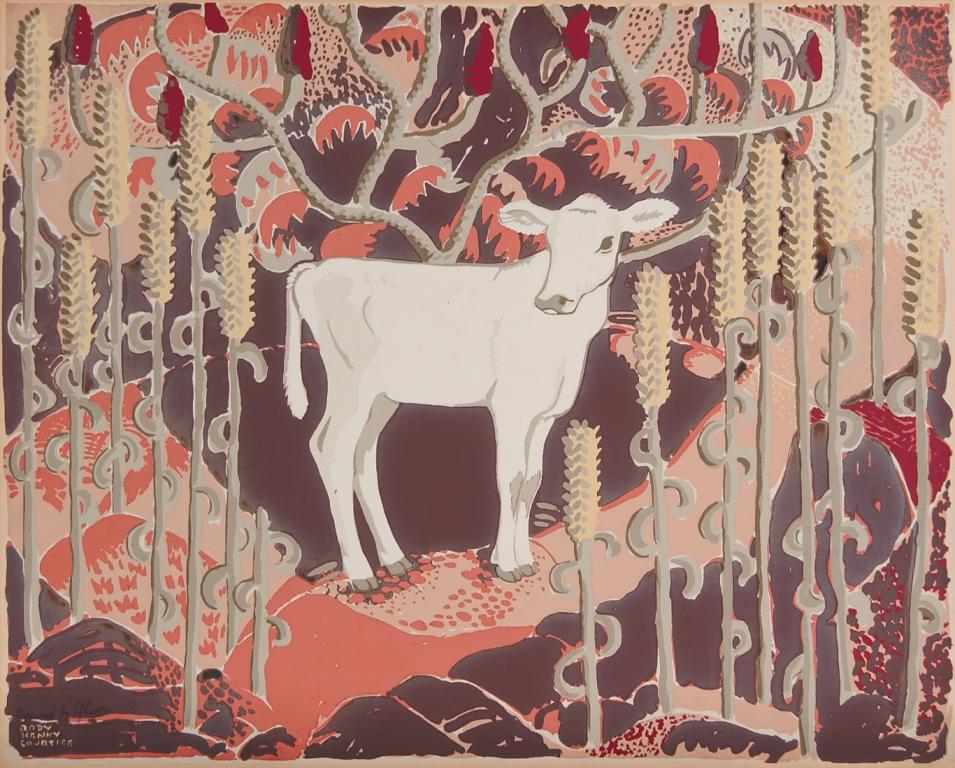Canadian artist Rody Kenny Courtice studied at the Ontario College of Art under Arthur Lismer, staying on as a librarian before going on to the Art Institute of Chicago, where she studied puppetry and stagecraft.
Courtice worked as a teaching assistant to Arthur Lismer for ten years, as well as with J. W. Beatty. She was a member of the Canadian Group of Painters, the Royal Canadian Academy, the Ontario Society of Artists, the Canadian Society of Painters in Water Colour, the Canadian Society of Graphic Artists and the Federation of Canadian Artists. Painting a mix of landscapes and abstracts as well as farm subjects, Courtice’s painting was influenced by the Group of Seven, and later by Hans Hofmann, with whom she did a summer course at Provincetown in 1950.
On the occasion of her solo show at Victoria College in 1951, a Globe and Mail reviewer noted that, “Beginning with the work fairly typical of the post-Group of Seven era she has gone on to representational work integrated with abstract backgrounds and then to more stress on the abstract side… ‘July Siesta’ (a study of cats and dandelions in hot, midsummer laziness) or ‘Cows’ (a study of these animals in a formal design). She is never merely funny, but she has the rare gift of feeling the intrinsic humour of the world.”
In her work ‘White Calf’, Courtice depicts its namesake, surrounded by wheat stalks and sumac branches superimposed on a whimsical patterned ground, bringing together the romantic cycle of the seasons. A charming fusion of the primary elements is found in her work.
Courtice exhibited in London at the Tate Gallery; in Brazil; at the 1939 World’s Fair in New York; the Riverside Museum; and at the American-British Gallery in New York City. In 2007, the Varley Art Gallery in Unionvile, Ontario held an exhibit of her work titled ‘Rody Kenny Courtice: The Pattern of Her Times’. Courtice said, “It’s very difficult to successfully combine the roles of wife, mother and artist, but if you fight hard enough, you can do it.”
